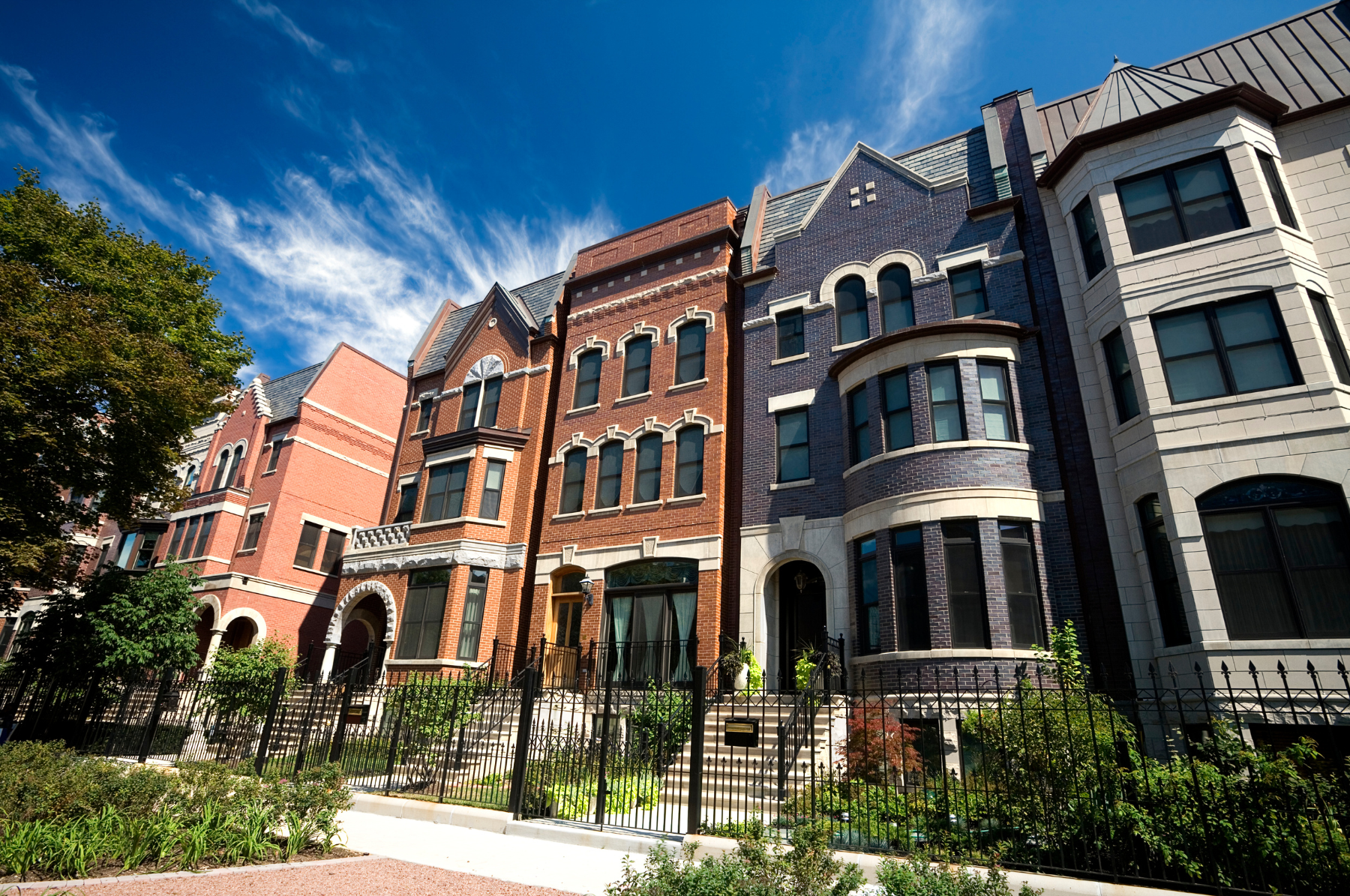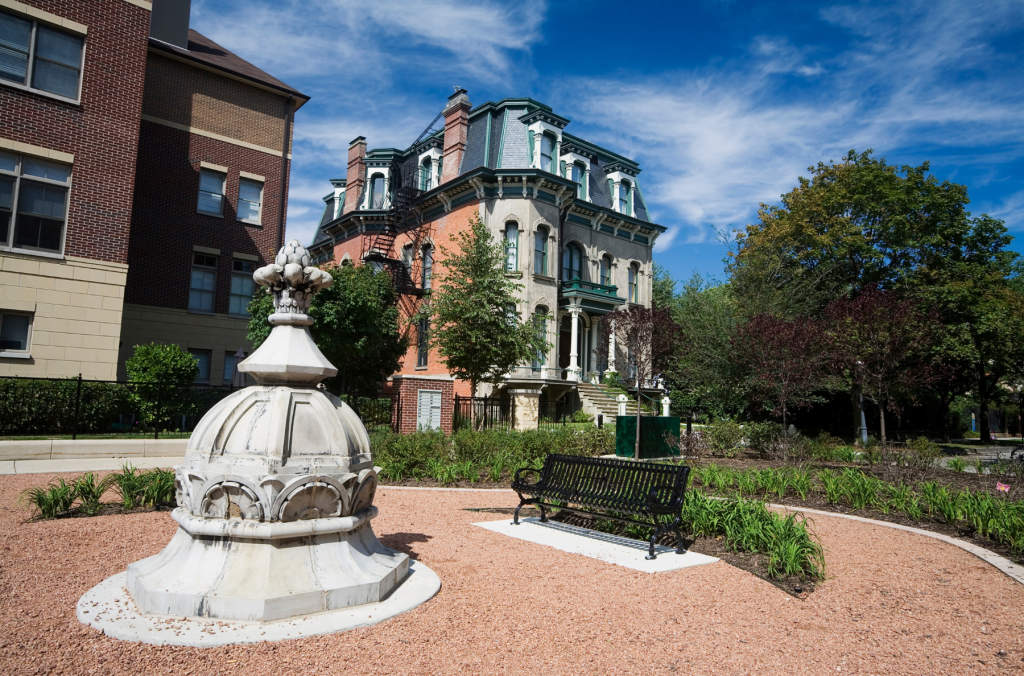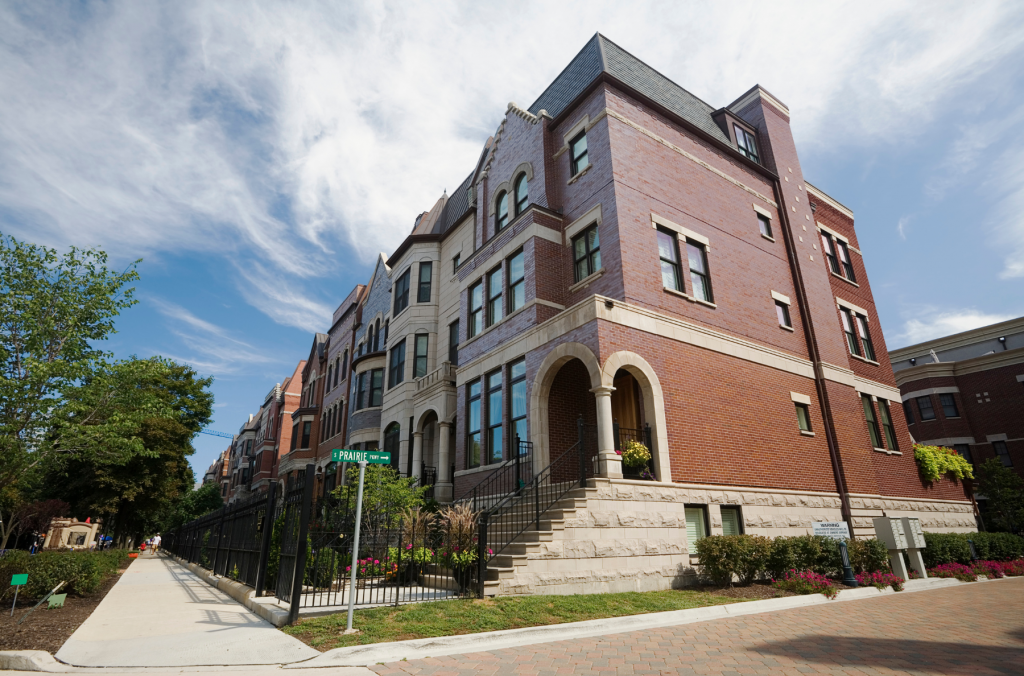
Prairie Avenue: Chicago’s First “Millionaires’ Row”
Published on April 11, 2024
Found on the Near South Side, the Prairie Avenue District has some of Chicago’s most historic mansions. eATLAS’ CHIstory ScavHunt Adventure, which takes place May 31st-June 2nd, will immerse you in the Windy City’s storied past, with a chance to win cash prizes totaling $5,000. You can get full details here.
By Dave Lifton (@daveeatschicago)
These days, Chicago’s elites are most likely to live on the Gold Coast, in a gleaming new condominium high-rise, or on the North Shore. But, as the city rose from the ashes of the Great Chicago Fire, they congregated along S. Prairie Ave. between 16th and 22nd St.
The area had already played a vital role in Chicago’s birth. During the War of 1812, the Battle of Fort Dearborn, a 15-minute ambush by the Potawatomi against federal troops retreating to Fort Wayne, Ind., is believed to have taken place at what is now Prairie and 18th St. The defeat led to a 20-year period of removal of the Native tribes, after which Chicago was chartered as a town. A statue commemorating Chief Black Partridge saving the life of an U.S. officer’s wife, was erected on the site in 1893, although it was placed in storage for conservation in the 1990s.
Prairie Ave.’s first house was built in 1853 for brick manufacturer John Staples, but it took another 15 years or so for more of Chicago’s wealthy to follow. Daniel Thompson, the superintendent of the City Railway Company, constructed a $100,000 house at 1936 S. Prairie. Shortly before completion, the Chicago Tribune described how the city had wealth but, due to its youth, had yet to have its version of New York’s 5th Ave., a “sacred region where only fashion can reside.” The writer posited that Prairie Ave. could be that location.
Prairie Avenue was untouched by the Great Chicago Fire of 1871, and many of the city’s most prominent families were attracted to Prairie Ave. due to its proximity to both downtown and Lake Michigan. The best known of these were retailer Marshall Field, railroad magnate George Pullman, and meatpacker Philip Armour. Industrialists, merchants, lumber barons, local businessmen, and bankers all built homes on Prairie Avenue.
By 1887, the combined wealth of the residents of Prairie Ave. was estimated at $50 million, earning it the nickname of “Millionaires’ Row.” Six years later, at least 40 of the 60 members of the Commercial Club—the same group who commissioned Daniel Burnham’s 1909 Plan of Chicago – lived there.

But the good times didn’t last due to a few factors at the start of the 20th century. The nearby railroad tracks—both the “L” and the Illinois Central line—brought increased noise and pollution. The rise of the automobile resulted in the growth of Motor Row a few blocks away on Michigan Ave. Lastly, Dearborn St. became The Levee, a notorious red-light district.
In the wake of Potter and Bertha Palmer moving to the newly created Lake Shore Drive, the generations of children who grew up in those homes built their own mansions on the Gold Coast. Others went to the North Shore.
New residential constructions on Prairie Ave. stopped in 1904. As the owners passed away, the houses transitioned to other uses, such as boarding houses or factories, or they were demolished. A 1929 Tribune article bemoaned the faded glory. “A caretaker guards the empty, shuttered Field mansion at 1905, and ‘furnished rooms’ proclaims the destiny of the Armour house at 2115,” wrote Betty Browning. “Chickens and ducks run wild in the premises of the J.D. Sherman house and vacant lots replace the old homes of Eugene S. Pike and Silas B. Cobb.”
The last resident of Prairie Ave., Addie Hibbard Gregory, remained in her house until 1944.

The 1966 purchase of farm machine manufacturer John J Glessner’s 1887 proto-Prairie School mansion started a movement towards preserving Prairie Avenue’s remaining homes. But it wasn’t until 1973, by which point only eight homes remained, that the city announced plans to designate Prairie Ave. as a historic district, consisting of the 1800 and 1900 blocks of S. Prairie Ave., 1800 block of S. Indiana Ave., and 211-217 E. Cullerton St.
The process took six years, and involved Chicago’s oldest home. The Clarke House, built in 1836 at what is now the 1600 block of S. Michigan Ave., was relocated to 4526 S. Wabash Ave. in 1872. To spare the house from demolition, the city bought the house and looked to bring it to 1827 S. Indiana Ave. But in order to do that, the house had to go above the “L,” which didn’t exist in 1872. At midnight on Dec. 4th, 1977, train service was stopped as the Clarke House was rolled over the tracks to the other side. Unfortunately, the hydraulic system used to lower the house froze, and it took two weeks for it to thaw and bring the house to its current site. The Prairie Avenue Historic District became a reality in 1979. With the Clarke and Glessner Houses serving as museums and anchors of the neighborhood, it has led to new constructions—residential and commercial—that has revitalized the South Loop in the past 20

The Adventure starts when you say it does.
All eATLAS Adventures are designed and built by experienced eATLAS Whoa!Guides. They're always on. Always entertaining. And always ready to go.
Check out our Adventures!